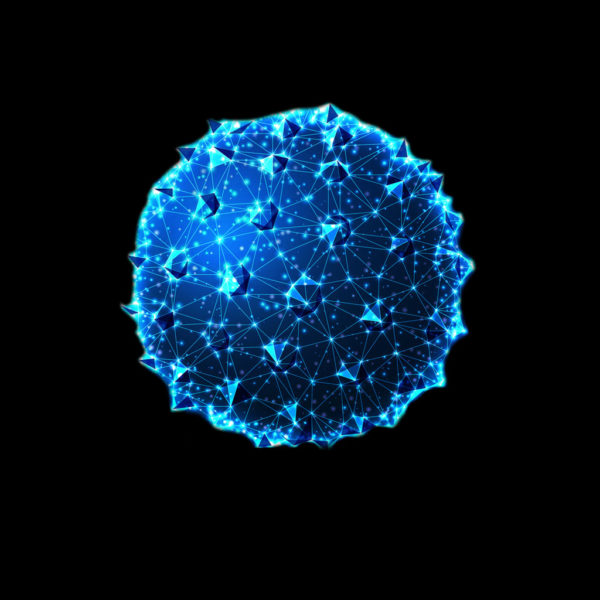ERADICATING MEASURABLE RESIDUAL DISEASE IN AML
While AML often responds well to initial treatment, many patients have residual cancer cells that may cause the disease to return. Too frequently, the resurgent neoplasm does not respond to follow-up treatments — perhaps because of residual cells’ inherent resistance, or due to a protective niche in the micro-environment or resulting from as-yet-unknown factors. This ambitious project explores the biological mechanisms underlying residual AML, seeking to identify targets for treatment strategies to keep the disease from returning.
While AML often responds well to initial treatment, many patients have residual cancer cells that may cause the disease to return. Too frequently, the resurgent neoplasm does not respond to follow-up treatments — perhaps because of residual cells’ inherent resistance, or due to a protective niche in the micro-environment or resulting from as-yet-unknown factors. This ambitious project explores the biological mechanisms underlying residual AML, seeking to identify targets for treatment strategies to keep the disease from returning.
PROJECT HIGHLIGHTS
- Aiming to identify the mechanisms underlying persistent residual disease in AML, especially its ability to evade chemotherapy and the immune system.
- Developing novel clinical-grade assays and tools for detecting and quantifying residual AML.
- Identifying cell and micro-environmental adaptations that facilitate residual AML cells’ survival.
- Testing novel clinical strategies that target vulnerabilities in residual AML cells.
TEAMLAB UPDATES



MEET THE TEAM
The researchers who comprise the Eradicating Measurable Residual Disease TeamLab are at the forefront of AML basic, translational, and clinical science taking place at five leading institutions. The project will enable them to leverage and combine the multidisciplinary expertise and resources by working collaboratively across institutions. They will, for example, be able to share patient samples and laboratory reagents, perform multi-site clinical trials, and cross-validate their unique quantitation and characterization platforms. The potential impact will greatly exceed the sum of the parts.
We invite you to learn about the institutions and individual investigators driving this important scientific and clinical research project.
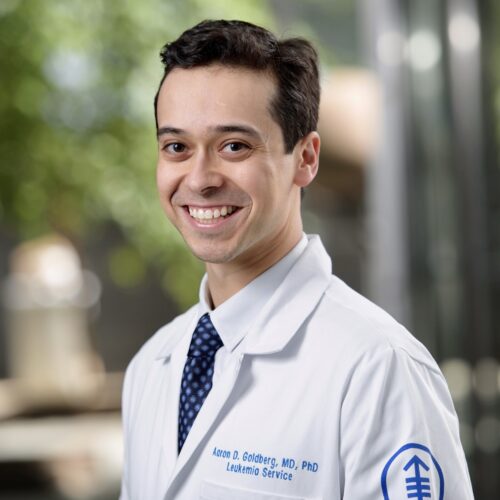
Aaron Goldberg, MD, PhD
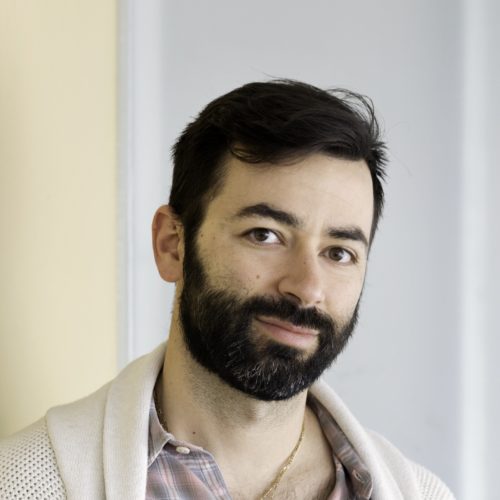
Alex K. Shalek, PhD
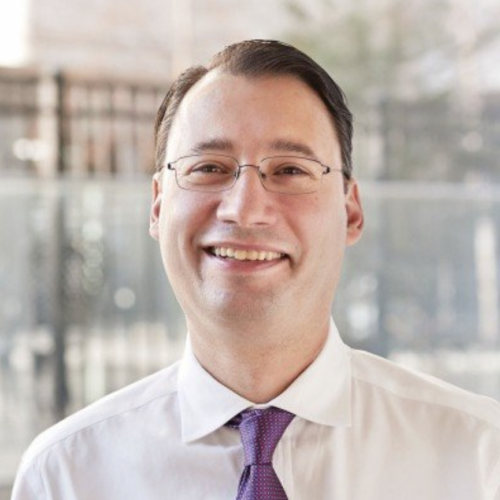
Alex Kentsis, MD, PhD

Alexander Ambinder, MD
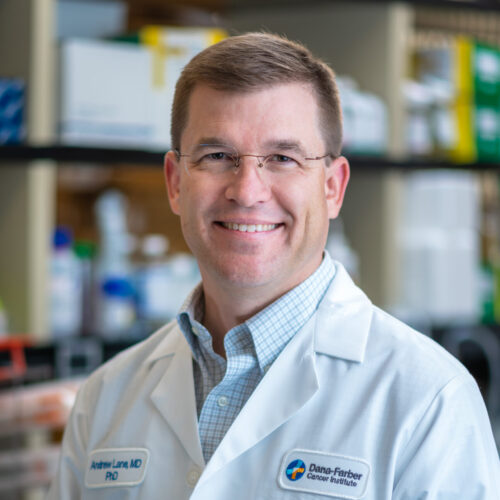
Andrew Lane, MD, PhD

Challice Bonifant, MD, PhD
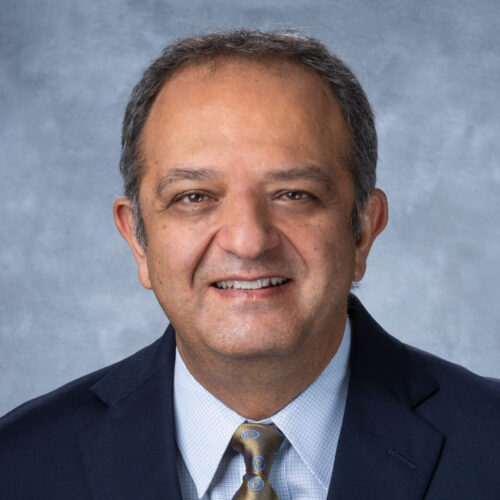
Farhad Ravandi, MD
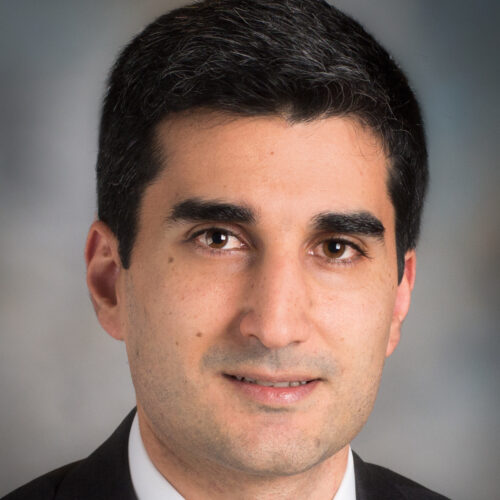
Ghayas Issa, MD
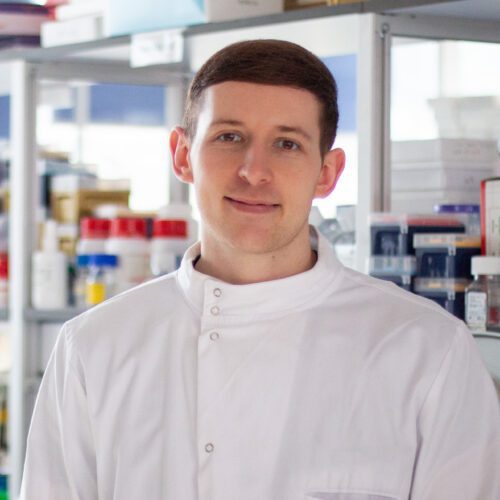
Hayden Bell, PhD

Jacqueline S. Garcia, MD
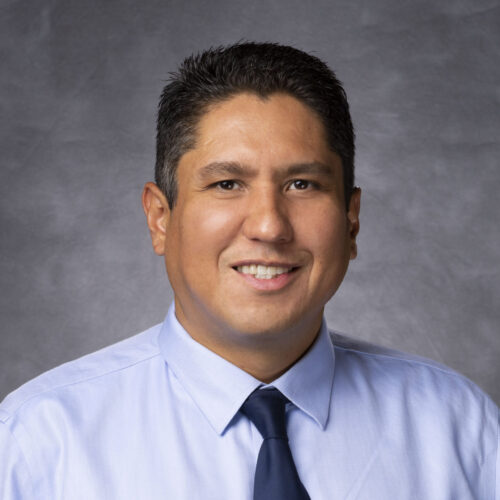
Jairo Matthews

Jeffrey Molldrem, MD

Ken Chen, PhD

Keyur P. Patel MD, PhD
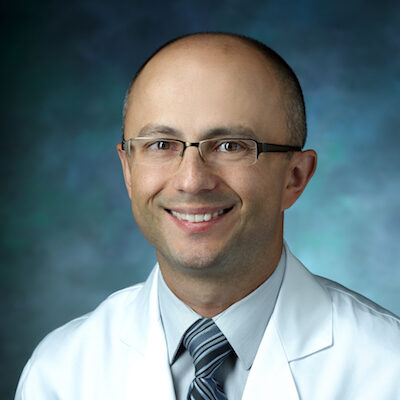
Lukasz Gondek, MD, PhD

Marina Konopleva, MD, PhD

Mark Levis, MD, PhD

Michael Andreeff, MD, PhD

Michael Hemann, PhD

Naval Daver, MD
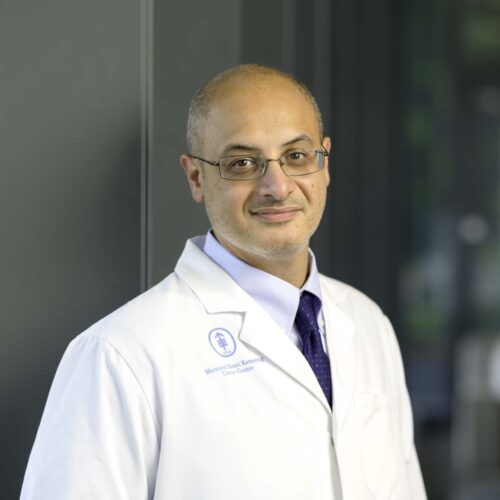
Omar Abdel-Wahab, MD

Rich Stone, MD

Ross Levine, MD

Scott Manalis, PhD

Wenbin Xiao, MD, PhD

Aaron Goldberg, MD, PhD
Memorial Sloan Kettering Cancer Center
TeamLab: Eradicating Measurable Residual Disease in AML
Dr. Aaron Goldberg is an Assistant Attending Physician at Memorial Sloan Kettering Cancer Center (MSKCC), and Assistant Professor of Medicine at Weill Cornell Medical College in New York City. He received a bachelor’s degree magna cum laude with highest honors in History and Science from Harvard University. He earned his MD from Weill Cornell Medical College and PhD from Rockefeller University, where he studied epigenetic mechanisms of gene regulation with Dr. C. David Allis. He completed his residency in internal medicine at Brigham and Women’s Hospital, followed by a fellowship in hematology and medical oncology at MSKCC under the mentorship of Dr. Martin Tallman. In his current role, Dr. Goldberg cares for leukemia patients, leads translational research projects, and serves as the principal investigator for multiple clinical trials. His research interests focus on the development of novel therapeutic approaches for acute myeloid leukemia, including combination therapies to target residual disease, as well as evaluation of real-world outcomes of current therapy and genomic predictors of response. Dr. Goldberg currently serves as a member of the National Comprehensive Cancer Network Guidelines Panel for myelodysplastic syndromes. He has received multiple awards, including a Young Investigator Award from the American Society of Clinical Oncology, and an American Society of Hematology Fellow Scholar Award in Clinical Research.

Alex K. Shalek, PhD
MIT’s Koch Institute for Integrative Cancer Research
TeamLab(s): Conquering KRAS in Pancreatic Cancer, Demystifying Pancreatic Cancer Therapies, Eradicating Measurable Residual Disease in AML, Targeting Clonal Hematopoiesis to Prevent AML, The Data Science Hub
Alex K. Shalek, PhD (pronouns: he/him/his) is the Director of the Institute for Medical Engineering & Science (IMES), the Director of the Health Innovation Hub at MIT, and the J. W. Kieckhefer Professor in IMES and the Department of Chemistry at MIT, as well as an Extramural Member of its Koch Institute for Integrative Cancer Research. He is also an Institute Member of the Broad Institute, a Member of the Ragon Institute, an Assistant in Immunology at MGB, and an Instructor in Health Sciences & Technology at HMS. Dr. Shalek received his bachelor’s degree summa cum laude from Columbia University and his Ph.D. from Harvard University in chemical physics under the guidance of Hongkun Park, and performed postdoctoral training under Hongkun Park and Aviv Regev (Broad/MIT). His lab’s research is directed towards the development and application of new approaches to elucidate cellular and molecular features that inform tissue-level function and dysfunction across the spectrum of human health and disease. Dr. Shalek and his work have received numerous honors including a NIH New Innovator Award, a Beckman Young Investigator Award, a Searle Scholar Award, a Pew-Stewart Scholar Award, the Avant-Garde (DP1 Pioneer) Award from the National Institute for Drug Abuse (NIDA), and an Alfred P. Sloan Research Fellowship in Chemistry, as well as the 2019-2020 Harold E. Edgerton Faculty Achievement Award at MIT and the 2020 HMS Young Mentor Award.

Alex Kentsis, MD, PhD
Memorial Sloan Kettering Cancer Center
TeamLab: Eradicating Measurable Residual Disease in AML
Alex Kentsis is a pediatric oncologist at MSK Kids and cancer biologist at the Sloan Kettering Institute. He directs MSK’s Tow Center for Developmental Oncology, where his research takes advantage of modern technologies to improve our understanding of the biologic causes of blood and solid tumors. Together with colleagues, he has made discoveries about new therapeutic targets in young-onset leukemias and solid tumors, mechanisms by which diverse cancers can evade new treatments, and improved strategies to overcome treatment resistance. His lab has identified new mechanisms of aberrant gene control and resistance to apoptosis in leukemias, and mechanisms of site-specific oncogenic mutations and DNA repair dependencies in developmental solid tumors. Combined with the development of new functional proteomic methods and therapeutics, his work continues to define precise molecular mechanisms that lead to rational therapeutic strategies for patients with leukemias and solid tumors. Dr. Kentsis received his AB in Biological Sciences and AM in Biochemistry from the University of Chicago, followed by MD and PhD in Biophysics from the Mount Sinai School of Medicine and New York University. He completed clinical training in pediatrics at Boston Children’s Hospital and pediatric hematology and oncology at Dana-Farber Cancer Institute, and joined the MSK faculty in 2013. He has been recognized with the Arceci Innovation Award from St. Baldrick’s Foundation, Leukemia & Lymphoma Society Scholar Award, Pershing Square Sohn Prize, Rita Allen Foundation Scholar Award, Investigator Award from Society for Pediatric Research, and elected to the American Society of Clinical Investigation (ASCI).

Alexander Ambinder, MD
The Sidney Kimmel Comprehensive Cancer Center at Johns Hopkins
TeamLab: Eradicating Measurable Residual Disease in AML
Alexander Ambinder is an Assistant Professor of Hematologic Malignancies at The Sidney Kimmel Comprehensive Cancer Center. He graduated with a BA in Biology from Washington University in St. Louis. He matriculated to Emory School of Medicine and graduated Summa Cum Laude and also obtained a Masters in Public Health from the Rollins School of Public Health. He went on to train in internal medicine at the Osler Medical Training Program at the Johns Hopkins School of Medicine. He went on to serve as an Assistant Chief of Service (Chief Resident). He then did his oncology and hematology fellowship training at The Sidney Kimmel Comprehensive Cancer Center. He specializes in caring for patients with acute leukemias and patients undergoing allogeneic hematopoietic cell transplantation. Alexander Ambinder is also an active clinical investigator with a particular interest in developing MRD-adapted therapeutic paradigms.

Andrew Lane, MD, PhD
Dana-Farber Cancer Institute
TeamLab: Eradicating Measurable Residual Disease in AML
Andrew Lane, MD, PhD, is a physician in the Adult Leukemia Program and a laboratory investigator in the Department of Medical Oncology at the Dana-Farber Cancer Institute. He is co-Leader of the Dana-Farber/Harvard Cancer Center Leukemia Program. He is an associate professor of medicine at Harvard Medical School. He is also an associate member of the Broad Institute of Harvard and MIT. Dr. Lane’s career goal is to bring new treatments to patients with blood cancer. His laboratory research focuses on identification of novel targets in high-risk blood cancers like AML. Dr. Lane is a Scholar of the Leukemia and Lymphoma Society. He has received several honors including the Seldin-Smith Award for Pioneering Research from the American Society of Clinical Investigation, the Brian P. O’Dell Memorial Award from the Leukemia and Lymphoma Society, and the Janet D. Rowley Memorial Medical Research Award from Gabrielle’s Angel Foundation. He was elected to the American Society of Clinical Investigation in 2021. Dr. Lane received a bachelor’s degree from Vanderbilt University, and an MD and PhD from Washington University. He completed a residency in internal medicine at Brigham and Women’s Hospital and fellowships in hematology and medical oncology at the Dana-Farber Cancer Institute.

Challice Bonifant, MD, PhD
The Sidney Kimmel Comprehensive Cancer Center at Johns Hopkins
TeamLab: Eradicating Measurable Residual Disease in AML
Challice Bonifant, MD, PhD is a Pediatric Oncologist in the Department of Oncology at the Sidney Kimmel Comprehensive Cancer Center at Johns Hopkins University. She is a member of the Bloomberg~Kimmel Institute for Cancer Immunotherapy and the Cellular and Molecular Medicine and Pathobiology Programs in the School of Medicine. Dr. Bonifant is a graduate of Wake Forest University and received her MD and PhD in tumor biology from Georgetown University. Her general pediatric training was completed as part of the Integrated Research Pathway at Johns Hopkins with further Hematology/Oncology fellowship training at Baylor College of Medicine/Texas Children’s Hospital. Her research focus is the design and development of cellular immunotherapies as a treatment for poor-prognosis cancers.

Farhad Ravandi, MD
The University of Texas MD Anderson Cancer Center
TeamLab: Eradicating Measurable Residual Disease in AML
Farhad Ravandi, MD, is Janiece and Stephen A. Lasher Professor of Medicine and chief of the Section of Acute Myeloid Leukemia in the Department of Leukemia at The University of Texas MD Anderson Cancer Center (MDACC) in Houston. He graduated from the University of London, UK, and undertook residency and fellowship training at Baylor College of Medicine and MDACC. During this time, he specialized in the management of hematologic malignancies and stem cell transplantation. He then moved to the University of Illinois at Chicago as director of the leukemia program and interim director of stem cell transplant program for 3 years, until he joined the MDACC Department of Leukemia in 2003. He has been board certified in internal medicine, hematology, and medical oncology. Dr Ravandi’s main areas of interests are therapy of acute myeloid leukemia, as well as rare leukemias, including Philadelphia chromosome-positive acute lymphoblastic leukemia, hairy cell leukemia, and T-cell leukemias. He has authored several book chapters and many articles in peer-reviewed journals. He is a member of several professional societies, including the American Society of Hematology, American Society of Clinical Oncology, and Society of Hematologic Oncology, and is a member of the editorial boards of several journals.

Ghayas Issa, MD
The University of Texas MD Anderson Cancer Center
TeamLab: Eradicating Measurable Residual Disease in AML
Dr. Issa is a clinical investigator with a specialized focus on leukemia. He conducts translational research in the Departments of Leukemia and Genomic Medicine at MD Anderson. His research involves analysis of leukemia genetics in order to better understand therapeutic vulnerabilities, causes of progression and response to treatment. Through an improved understanding of leukemia underpinnings, he aims to develop safe and effective novel therapies. He is co-principal investigator of the MD Anderson Moon Shot project focused on MRD in AML. He previously trained at the laboratory of Dr. James Bradner at the Dana Farber Cancer Institute and completed his fellowship in Hematology and Oncology at MD Anderson. His current clinical investigation efforts have been focused on development of menin inhibitors, a novel class of targeted therapy for acute leukemia. He is Principal Investigator on multi-institutional clinical trials of menin inhibitors including investigator-initiated studies. He is developing a precision medicine program for acute leukemias susceptible to menin inhibition including biomarker identification, MRD assay development, elucidation of response and resistance mechanisms to this novel therapy, and development of rational therapeutic combinations. He has received numerous awards including the American Society of Clinical Oncology Young Investigator award, The Translational Research Training in Hematology Award from the American Society of Hematology and the European Hematology Association, and the Paul Calabresi Clinical Oncology Award (K12). As part of this Break Through Cancer project, Dr. Issa is leading the dual menin and BcL-2 inhibition combination clinical trial to eradicate MRD in susceptible acute leukemias.

Hayden Bell, PhD
Dana-Farber Cancer Institute
TeamLab: Eradicating Measurable Residual Disease in AML
Hayden Bell, PhD is a post-doctoral research fellow in the Department of Medical Oncology at Dana-Farber Cancer Institute, Harvard Medical School. He is also an associate member of the Broad Institute of Harvard and MIT. Dr. Bell’s career goal is to help develop precision medicine therapies for patients with high-risk hematological malignancies to improve clinical outcomes and minimize toxicities. He received a Bachelor’s degree with Honors at Lancaster University (UK), and a Master’s and PhD from Newcastle University (UK).

Jacqueline S. Garcia, MD
Dana-Farber Cancer Institute
TeamLab: Eradicating Measurable Residual Disease in AML
Dr. Jacqueline S. Garcia is an Assistant Professor of Medicine at Harvard Medical School. She is a clinical/translational investigator in the Adult Leukemia Program at the Dana-Farber Cancer Institute and an attending physician at the Brigham & Women’s Hospital. She graduated from University of Illinois at Chicago College of Medicine and completed her internship and residency training in Internal Medicine at the University of Chicago. She next completed Hematology and Oncology Fellowship training at Stanford University. She joined the faculty of the Adult Leukemia Program at Dana-Farber in 2015. Dr. Garcia’s research focus is on the design and execution of scientifically-based early phase clinical and proof-of-concept studies in advanced myeloid malignancies, including MDS, myelofibrosis and acute myeloid leukemia. Much of her research centers on identifying novel therapeutic opportunities to leverage the anti-apoptotic pathway in chemoresistant leukemia. Her research has received support from the National Institutes of Health/National Cancer Institute, Leukemia and Lymphoma Society, and Conquer Cancer Foundation.

Jairo Matthews
The University of Texas MD Anderson Cancer Center
TeamLab(s): Eradicating Measurable Residual Disease in AML, Targeting Clonal Hematopoiesis to Prevent AML
Jairo Matthews is a Program Director of the MDACC leukemia tissue biorepository. He received his bachelor’s degree from the University of Michigan, and gained experience working in the U of M Cancer Center tissue bank for Head and Neck cancer. He later moved to Houston and has been with the Leukemia department under the guidance of Steven Kornblau for over a decade. He serves as a link between trial study managers, attending physicians, lab PIs and personnel, and leukemia sample bank personnel. He recently received an MDACC Division of Cancer Medicine award for Excellence in Clinical Research.

Jeffrey Molldrem, MD
The University of Texas MD Anderson Cancer Center
TeamLab(s): Eradicating Measurable Residual Disease in AML, Targeting Clonal Hematopoiesis to Prevent AML
Dr. Molldrem is a physician scientist and joined the Stem Cell Transplantation and Cellular Therapy Department of The University of Texas MD Anderson Cancer Center in 1997. He is a Professor of Medicine and Virginia H. Cockrell Distinguished Professor in Immunology, and Chair of the Department of Hematopoietic Biology and Malignancy. He also serves as Scientific Director of Oncology Research for Biologics and Immunotherapy Translation (ORBIT) platform and as Institute Director and Head of Evolution of Cancer, Leukemia, and Immunity Post Stem cEll transplant (ECLIPSE) platform. He received his medical degree from the University of Minnesota in 1990, trained in internal medicine at UCLA, and completed fellowship in hematology and medical oncology at the National Institutes of Health and Johns Hopkins. The long-term goals of his lab are to understand how adaptive immunity against hematopoietic malignancies is mediated and regulated, and to develop novel immunotherapies that target these malignancies. His laboratory has been working on T cell-mediated anti-leukemia GVL immunity for more than 25 years with continuous NIH funding. Leveraging a large longitudinal biorepository of transplant donor and recipients, his lab is studying the coevolution and clonal architecture of AML and adaptive immunity using next generation deep sequencing and multi-omic approaches.

Ken Chen, PhD
The University of Texas MD Anderson Cancer Center
TeamLab(s): Eradicating Measurable Residual Disease in AML, Targeting Clonal Hematopoiesis to Prevent AML
Ken Chen, PhD, is a professor in Bioinformatics and Computational Biology, the Director of Bioinformatics of Institute of Personalized Cancer Therapy at the MD Anderson Cancer Center (MDACC), co-director of CPRIT single-cell genomics core. He also holds adjunct faculty position in Department of Systems Biology at MDACC and in Department of Computer Science at Rice University. He has a background in machine learning and statistical data analytics with extensive experience developing and applying computational tools to analyze large-scale high-throughput experimental data, towards detection, discovery, interpretation, modeling, and prediction. Over the past 18 years, he has led the development over 10 computational methods/tools such as BreakDancer, novoBreak (ranked #1 in DREAM 8.5 Challenges), Texomer, TransVar, Monovar, SCMER, and bindSC, which have been published in top journals such as Nature Methods, and have been widely used by computational biology, statistical genetics, single-cell, systems biology, and cancer personalized therapy communities. Meanwhile, He has been actively involved in major cancer research initiatives, such as 1000 Genomes, TCGA, ICGC, CTD2, HCA, and HTAN. His research group at MDACC is interested in developing cutting-edge data scientific capacity for quantitative characterization of cancer as a complex system and for identification of molecular targets useful for personalized diagnosis and medicine.

Keyur P. Patel MD, PhD
The University of Texas MD Anderson Cancer Center
TeamLab: Eradicating Measurable Residual Disease in AML
Keyur Pravinchandra Patel, MD, PhD, is a professor of pathology and laboratory medicine at the University of Texas M.D. Anderson Cancer Center. He is board-certified in anatomic pathology, clinical pathology, hematopathology, molecular genetic pathology and clinical informatics. He holds a PhD in cell biology and molecular pathogenesis.
Dr. Patel serves as the medical director of the molecular diagnostics laboratory, the director of molecular genetic pathology fellowship program and, the director of precision oncology decision support (PODS). His clinical interest includes developing innovative molecular biomarker testing for solid tumors and hematologic malignancies using next generation sequencing. These include single-gene and multi-gene approaches for diagnostic, prognostic, predictive and minimal residual disease monitoring applications including liquid biopsies.
Dr. Patel is actively involved in several national and international efforts to standardize molecular testing and, to develop guidelines for clinical applications and interpretation of variants. He has contributed to more than 280 peer-reviewed publications. He has a proven track record of developing evidence-based and sustainable molecular testing strategies including billing and reimbursement. He is passionate about training the next generation of molecular genetic pathology (MGP) experts.

Lukasz Gondek, MD, PhD
The Sidney Kimmel Comprehensive Cancer Center at Johns Hopkins
TeamLab: Eradicating Measurable Residual Disease in AML, Targeting Clonal Hematopoiesis to Prevent AML
Lukasz Gondek, MD, PhD is an Assistant Professor of Oncology at the Johns Hopkins University School of Medicine in the Division of Hematologic Malignancies. Dr. Gondek received his medical degree from the University of Silesia, Poland and his Ph.D. from the University of Warsaw, Poland. Following his post-doctoral training at the Cleveland Clinic, he completed residency in internal medicine at the Cleveland Clinic and his fellowship training in hematology at the Johns Hopkins University. His academic research focuses on cancer genomics as well as cancer stem cell biology in bone marrow failures and myeloid malignancies. His most recent work is focused on the biology and clinical consequences of clonal hematopoiesis.

Marina Konopleva, MD, PhD
The Albert Einstein College of Medicine
TeamLab: Eradicating Measurable Residual Disease in AML
Dr. Marina Konopleva is a Professor in the Departments of Oncology and Molecular Pharmacology at the Montefiore Einstein Cancer Center in Bronx, New York. She also serves as the Director of the Leukemia Program and the Co-Director of the Translational Blood Cancer Institute. She conducts laboratory research focusing on approaches in activating cell death, metabolic inhibitors, and immune-oncology in AML and has published over 400 peer-reviewed manuscripts. She is a scholar of the Leukemia and Lymphoma Society and her research is funded by the NIH, Department of Defense, and various private foundations. Her research extends to clinical translational investigations and she has developed clinical trials based on laboratory discoveries. Dr. Konopleva has also been an active mentor to trainees including undergraduate, medical and graduate students, and post-doctoral fellows who trained under her direction in support of her various laboratory grants and projects. She leads the Leukemia SPORE at UT MD Anderson Cancer Center and continues to serve as an EAB member on the DFCI SPORE in myeloid malignancies. Her clinic follows patients with hematologic malignancies, with a focus on acute leukemias (acute myeloid and acute lymphoblastic leukemia). She has additional expertise in treating patients with high-risk myelodysplastic syndrome and chronic myeloid leukemia.

Mark Levis, MD, PhD
The Sidney Kimmel Comprehensive Cancer Center at Johns Hopkins
TeamLab: Eradicating Measurable Residual Disease in AML
Dr. Mark Levis is a graduate of the Medical Scientist Training Program from U.C. San Francisco. He completed his residency training in internal medicine and a fellowship in medical oncology at Johns Hopkins University. He is a Professor of Oncology and the Director of the Adult Leukemia Service and Co-Director of the Division of Hematologic Malignancies at the Sidney Kimmel Comprehensive Cancer Center at Johns Hopkins. His clinical expertise is focused on acute myeloid leukemia, acute lymphoblastic leukemia, and chronic myelogenous leukemia. His broad research goals are to identify and validate novel molecular therapeutic targets in hematopoietic malignancies. His research group is interested in the identification and pre-clinical and clinical development of novel targeted therapies.

Michael Andreeff, MD, PhD
The University of Texas MD Anderson Cancer Center
TeamLab: Eradicating Measurable Residual Disease in AML
Dr. Andreeff received his M.D. and Ph.D. degrees at the University of Heidelberg, Germany, and additional training and faculty appointments at the Memorial Sloan-Kettering Cancer Center (MSKCC) in New York, NY, in the Departments of Pathology and Leukemia.
He has been a pioneer in flow cytometry, when he established the first flow cytometry laboratory at the University of Heidelberg and organized the first European conference on flow cytometry. After joining Memorial Sloan-Kettering Cancer Center in New York, NY, became head of the Leukemia Cell Biology and Hematopathology Flow Cytometry Laboratory and organized the first Clinical Cytometry and the first Molecular Cytogenetics Conferences.
For over 30 years he is Director of the NCI-sponsored Flow Cytometry and Cellular Imaging MDACC Core Facility and head of Head of “”Molecular Hematology & Therapy”” Section. He is Professor of Medicine and holds the Paul and Mary Haas Chair in Genetics at The University of Texas MD Anderson Cancer Center. He has received uninterrupted NCI funding for over 30 years, served as Principal Investigator of AML and CML P01 and CPRIT MIRA grants, and in the MDACC Leukemia, Lymphoma, Ovarian and Breast Cancer SPORE and other grants. He has published over 759 peer-reviewed papers, 5 books and 75 book chapters
Dr Andreeff’s group has worked extensively on drug resistance and stem cells in hematopoietic malignancies and in breast cancer and developed or co-developed several new therapeutic agents including the novel triterpenoids CDDO and CDDO-Me and BCL-2-, MCL-1, XIAP-, survivin-, MEK-, HDM2- and MYC targeting agents. His group has made major contributions to the understanding of micro-environment-mediated drug resistance and of MRD in TP53 mutant AML. Finally, discovered the role of bone marrow-derived multipotent mesenchymal stromal cells (MSC) in tumor stroma formation and developed therapeutic strategies to alter the stromal microenvironment in solid tumors and leukemias.

Michael Hemann, PhD
MIT’s Koch Institute for Integrative Cancer Research
TeamLab: Eradicating Measurable Residual Disease in AML
Michael Hemann, PhD is an Associate Professor of Biology at MIT, where his research has focused on the development of models of cancer evolution and therapeutic response. His group has made extensive use of mice as preclinical systems to examine therapeutic efficacy and have developed hematopoietic and solid tumor models that can effectively interrogate aspects of acquired and intrinsic drug resistance. This also involves the use of computational approaches to examine tumor heterogeneity and evolution. His work has pioneered the development of novel screening strategies to characterize the genetic determinants of drug action in relevant physiological settings. These systems are highly tractable, such that one can rapidly progress from candidate gene identification to cell-based and in vivo validation experiments. The ongoing objective of the Hemann is the development of combination therapeutic regimens that can subvert the evolution of drug resistance. Dr. Hemann received his BA from Wesleyan University. He received his PhD from the Johns Hopkins School of Medicine and performed and performed his post-doctoral research at the Cold Spring Harbor Laboratory. He has been the recipient of numerous awards, include the Mette Strand Award, the Harold Weintraub Award, Helen Hay Whitney and Rita Allen Fellowships, the Latham Family Career Fellowship and the Daisy Ho Memorial Award.

Naval Daver, MD
The University of Texas MD Anderson Cancer Center
TeamLab: Eradicating Measurable Residual Disease in AML
Dr. Naval Daver is an associate professor and director of the Leukemia Research Alliance Program in the Department of Leukemia at MD Anderson Cancer Center (MDACC) in Houston, TX. He is a clinical investigator with a focus on molecular and immune therapies in acute myeloid leukemia (AML) and myeloid disease, and is principal investigator on more than 25 ongoing institutional, national, and international clinical trials in these diseases, including multiple registration and label enabling trials.
These trials focus on developing a personalized therapy approach by targeting specific mutations or immune pathways expressed by patients with AML, evaluating novel combinations of targeted, immune, and cytotoxic agents, and identifying and overcoming mechanisms of resistance. He is especially interested in developing monoclonal and bispecific antibodies, immune checkpoint, CD47, NK and T-cell based approaches, as well as combinations of targeted and apoptotic therapies in AML, and he is leading a number of these trials at MDACC. Dr Daver has published more than 400 peer-reviewed manuscripts and is on the editorial board of numerous hematology journals. He also serves as Chair on numerous national and international meetings and educational platforms.

Omar Abdel-Wahab, MD
Memorial Sloan Kettering Cancer Center
TeamLab: Eradicating Measurable Residual Disease in AML, Targeting Clonal Hematopoiesis to Prevent AML
Omar Abdel-Wahab, MD, is the Edward P. Evans Chair in MDS at Memorial Sloan Kettering Cancer Center where he also serves as Chair of the Molecular Pharmacology Program in the Sloan Kettering Institute. His clinical areas of expertise are in myeloid malignancies, chronic lymphocytic leukemia, and rare forms of leukemias including hairy cell leukemia, CMML, BPDCN, and histiocytoses. Dr. Abdel-Wahab completed his undergraduate studies and M.D. at Duke University followed by Internal Medicine residency at the Massachusetts General Hospital. He then joined MSK in 2007 as a Fellow in Hematology/Medical Oncology and joined as independent faculty member in 2012. Over the last ten years, his laboratory has been focused on understanding alterations in the process of RNA splicing in cancer. Motivated by the discovery of high frequency mutations in the splicing machinery in leukemias and certain solid tumors, his lab’s work has led to the development of several therapeutic approaches for these genetic subtypes of cancer which are currently in phase 1/2 clinical trials. In addition, his laboratory has performed a number of studies of molecular genetics and genomics of blood cancers more broadly and used this information to develop novel therapeutic approaches for myeloid and lymphoid hematologic cancers. He has received several honors, including the Seldin-Smith Award for Pioneering Research from the American Society of Clinical Investigation, the Joanne Levy Memorial Award for Outstanding Achievement from the American Society of Hematology, and the Pershing Square Sohn Prize for Young Investigators in Cancer Research.

Rich Stone, MD
Dana-Farber Cancer Institute
TeamLab: Eradicating Measurable Residual Disease in AML
Richard Stone, MD, is the Lunder Family Chair in Leukemia and Chief of Staff at Dana-Farber Cancer Institute. Dr. Stone earned his medical degree from Harvard Medical School in 1981. He completed his internal medicine residency training and served as Chief Medical Resident at Brigham and Women’s Hospital. He completed his hematology-oncology fellowship at Dana-Farber. He is also Director of Translational Research for the Leukemia Division in the Department of Medical Oncology at DFCI, and Professor of Medicine at Harvard Medical School. Dr. Stone is nationally recognized for his translational and clinical research concerning blood and bone marrow malignancies including acute leukemia, myeloproliferative disorders and myelodysplastic syndrome [MDS] (a bone marrow failure state that may convert to leukemia).In addition to his work at Dana-Farber, Dr. Stone is a Vice Chair of the National Comprehensive Cancer Network (NCCN) MDS panel and is also a member of the NCCN AML panel. He previously served as the Chair of the Alliance Leukemia Committee, Chair of the Medical Advisory Board of the Aplastic Anemia and MDS International Foundation, and the Chair of the ABIM Oncology Board. Dr. Stone has participated extensively in teaching medical students, residents, and fellows, as well as graduate medical education courses on leukemia and related disorders. He is the author of many academic papers that have been published in the New England Journal of Medicine, Blood, Leukemia as well as numerous other journals. He has also served on the editorial boards of Leukemia Research, Blood and Journal of Clinical Oncology
He has had a significant leadership role in the development of five new drugs for the treatment of acute myeloid leukemia (AML) that were approved in the past several years.

Ross Levine, MD
Memorial Sloan Kettering Cancer Center
TeamLab: Eradicating Measurable Residual Disease in AML
Ross Levine is the Deputy Physician-In-Chief, Translational Research, Memorial Hospital, at Memorial Sloan Kettering (MSK). He is a member of the Human Oncology and Pathogenesis Program and an Attending Physician on the Leukemia Service, the Laurence Joseph Dineen Chair in Leukemia Research and a Professor of Medicine at Weill Cornell Medical College. Dr. Levine earned his A.B. from Harvard College and a M.D. from Johns Hopkins. He served as a Resident in Internal Medicine at Massachusetts General Hospital and as a Hematology-Oncology Fellow at Dana-Farber Cancer Institute. His laboratory focuses on elucidating the genetic basis of myeloid malignancies, to improve outcomes for patients with these disorders. His research interests include the role of JAK-STAT signaling in malignant transformation and in the effects of mutations in epigenetic modifiers in clonal hematopoiesis, MPN, and AML. His laboratory has a specific interest in translating this knowledge back to the clinic, participating in the preclinical and clinical evaluation of targeted therapies for leukemia patients. He has been honored with the Dameshek Prize from the American Society of Hematology, a Scholar Award from the Leukemia and Lymphoma Society, the Boyer Award for Clinical Investigation from MSK, and a NCI Outstanding Investigator R35 Award. In 2011 he was elected to the American Society of Clinical Investigation and in 2018 to the Association of American Physicians. He serves on the Supervisory Board of Qiagen and on the Scientific Advisory Board of C4 Therapeutics, Isoplexis, Mana Therapeutics and was on the Scientific Advisory Board of Loxo Oncology.

Scott Manalis, PhD
MIT’s Koch Institute for Integrative Cancer Research
TeamLab: Eradicating Measurable Residual Disease in AML
Scott Manalis is the David H. Koch (1962) Professor of Engineering and faculty member in the departments of biological and mechanical engineering at MIT. He currently serves as Associate Department Head in the Department of Biological Engineering. He received a BS in physics from the University of California, Santa Barbara, and a PhD in applied physics from Stanford University. Dr. Manalis is a founder of two companies (Travera and Affinity Biosensors) that utilize the suspended microchannel resonator for weighing single cells.

Wenbin Xiao, MD, PhD
Memorial Sloan Kettering Cancer Center
TeamLab: Eradicating Measurable Residual Disease in AML, Targeting Clonal Hematopoiesis to Prevent AML
Wenbin Xiao, MD, PhD, is an assistant Member and attending of the Department of Pathology and Laboratory Medicine at the MSKCC. Dr. Xiao received MD/PhD degree from Peking University and performed postdoctoral research at La Jolla Institute for Immunology. He then completed his residency training in Pathology at Case Western Reserve University and Hematopathology Fellowship training at the NCI under Elaine Jaffe before joining MSKCC as a faculty. His clinical research includes disease discovery, classification and risk stratification of acute myeloid leukemia (AML). His laboratory research focuses on the pathogenesis of RUNX1 mutations in myeloid neoplasm and the characterization of measurable residual disease (MRD) at single cell levels in AML. He is a recipient of NCI K08 award, Early Career Investigator Award from RUNX1 foundation, and Berard-Dorfman Founders Young Investigator Award from the Society for Hematopathology.
MEET THE TEAM
The researchers who comprise the Eradicating Measurable Residual Disease TeamLab are at the forefront of AML basic, translational, and clinical science taking place at five leading institutions. The project will enable them to leverage and combine the multidisciplinary expertise and resources by working collaboratively across institutions. They will, for example, be able to share patient samples and laboratory reagents, perform multi-site clinical trials, and cross-validate their unique quantitation and characterization platforms. The potential impact will greatly exceed the sum of the parts.
We invite you to learn about the institutions and individual investigators driving this important scientific and clinical research project.
View Team

Aaron Goldberg, MD, PhD

Alex K. Shalek, PhD

Alex Kentsis, MD, PhD

Alexander Ambinder, MD

Andrew Lane, MD, PhD

Challice Bonifant, MD, PhD

Farhad Ravandi, MD

Ghayas Issa, MD

Hayden Bell, PhD

Jacqueline S. Garcia, MD

Jairo Matthews

Jeffrey Molldrem, MD

Ken Chen, PhD

Keyur P. Patel MD, PhD

Lukasz Gondek, MD, PhD

Marina Konopleva, MD, PhD

Mark Levis, MD, PhD

Michael Andreeff, MD, PhD

Michael Hemann, PhD

Naval Daver, MD

Omar Abdel-Wahab, MD

Rich Stone, MD

Ross Levine, MD

Scott Manalis, PhD

Wenbin Xiao, MD, PhD

Aaron Goldberg, MD, PhD
Memorial Sloan Kettering Cancer Center
TeamLab: Eradicating Measurable Residual Disease in AML
Dr. Aaron Goldberg is an Assistant Attending Physician at Memorial Sloan Kettering Cancer Center (MSKCC), and Assistant Professor of Medicine at Weill Cornell Medical College in New York City. He received a bachelor’s degree magna cum laude with highest honors in History and Science from Harvard University. He earned his MD from Weill Cornell Medical College and PhD from Rockefeller University, where he studied epigenetic mechanisms of gene regulation with Dr. C. David Allis. He completed his residency in internal medicine at Brigham and Women’s Hospital, followed by a fellowship in hematology and medical oncology at MSKCC under the mentorship of Dr. Martin Tallman. In his current role, Dr. Goldberg cares for leukemia patients, leads translational research projects, and serves as the principal investigator for multiple clinical trials. His research interests focus on the development of novel therapeutic approaches for acute myeloid leukemia, including combination therapies to target residual disease, as well as evaluation of real-world outcomes of current therapy and genomic predictors of response. Dr. Goldberg currently serves as a member of the National Comprehensive Cancer Network Guidelines Panel for myelodysplastic syndromes. He has received multiple awards, including a Young Investigator Award from the American Society of Clinical Oncology, and an American Society of Hematology Fellow Scholar Award in Clinical Research.

Alex K. Shalek, PhD
MIT’s Koch Institute for Integrative Cancer Research
TeamLab(s): Conquering KRAS in Pancreatic Cancer, Demystifying Pancreatic Cancer Therapies, Eradicating Measurable Residual Disease in AML, Targeting Clonal Hematopoiesis to Prevent AML, The Data Science Hub
Alex K. Shalek, PhD (pronouns: he/him/his) is the Director of the Institute for Medical Engineering & Science (IMES), the Director of the Health Innovation Hub at MIT, and the J. W. Kieckhefer Professor in IMES and the Department of Chemistry at MIT, as well as an Extramural Member of its Koch Institute for Integrative Cancer Research. He is also an Institute Member of the Broad Institute, a Member of the Ragon Institute, an Assistant in Immunology at MGB, and an Instructor in Health Sciences & Technology at HMS. Dr. Shalek received his bachelor’s degree summa cum laude from Columbia University and his Ph.D. from Harvard University in chemical physics under the guidance of Hongkun Park, and performed postdoctoral training under Hongkun Park and Aviv Regev (Broad/MIT). His lab’s research is directed towards the development and application of new approaches to elucidate cellular and molecular features that inform tissue-level function and dysfunction across the spectrum of human health and disease. Dr. Shalek and his work have received numerous honors including a NIH New Innovator Award, a Beckman Young Investigator Award, a Searle Scholar Award, a Pew-Stewart Scholar Award, the Avant-Garde (DP1 Pioneer) Award from the National Institute for Drug Abuse (NIDA), and an Alfred P. Sloan Research Fellowship in Chemistry, as well as the 2019-2020 Harold E. Edgerton Faculty Achievement Award at MIT and the 2020 HMS Young Mentor Award.

Alex Kentsis, MD, PhD
Memorial Sloan Kettering Cancer Center
TeamLab: Eradicating Measurable Residual Disease in AML
Alex Kentsis is a pediatric oncologist at MSK Kids and cancer biologist at the Sloan Kettering Institute. He directs MSK’s Tow Center for Developmental Oncology, where his research takes advantage of modern technologies to improve our understanding of the biologic causes of blood and solid tumors. Together with colleagues, he has made discoveries about new therapeutic targets in young-onset leukemias and solid tumors, mechanisms by which diverse cancers can evade new treatments, and improved strategies to overcome treatment resistance. His lab has identified new mechanisms of aberrant gene control and resistance to apoptosis in leukemias, and mechanisms of site-specific oncogenic mutations and DNA repair dependencies in developmental solid tumors. Combined with the development of new functional proteomic methods and therapeutics, his work continues to define precise molecular mechanisms that lead to rational therapeutic strategies for patients with leukemias and solid tumors. Dr. Kentsis received his AB in Biological Sciences and AM in Biochemistry from the University of Chicago, followed by MD and PhD in Biophysics from the Mount Sinai School of Medicine and New York University. He completed clinical training in pediatrics at Boston Children’s Hospital and pediatric hematology and oncology at Dana-Farber Cancer Institute, and joined the MSK faculty in 2013. He has been recognized with the Arceci Innovation Award from St. Baldrick’s Foundation, Leukemia & Lymphoma Society Scholar Award, Pershing Square Sohn Prize, Rita Allen Foundation Scholar Award, Investigator Award from Society for Pediatric Research, and elected to the American Society of Clinical Investigation (ASCI).

Alexander Ambinder, MD
The Sidney Kimmel Comprehensive Cancer Center at Johns Hopkins
TeamLab: Eradicating Measurable Residual Disease in AML
Alexander Ambinder is an Assistant Professor of Hematologic Malignancies at The Sidney Kimmel Comprehensive Cancer Center. He graduated with a BA in Biology from Washington University in St. Louis. He matriculated to Emory School of Medicine and graduated Summa Cum Laude and also obtained a Masters in Public Health from the Rollins School of Public Health. He went on to train in internal medicine at the Osler Medical Training Program at the Johns Hopkins School of Medicine. He went on to serve as an Assistant Chief of Service (Chief Resident). He then did his oncology and hematology fellowship training at The Sidney Kimmel Comprehensive Cancer Center. He specializes in caring for patients with acute leukemias and patients undergoing allogeneic hematopoietic cell transplantation. Alexander Ambinder is also an active clinical investigator with a particular interest in developing MRD-adapted therapeutic paradigms.

Andrew Lane, MD, PhD
Dana-Farber Cancer Institute
TeamLab: Eradicating Measurable Residual Disease in AML
Andrew Lane, MD, PhD, is a physician in the Adult Leukemia Program and a laboratory investigator in the Department of Medical Oncology at the Dana-Farber Cancer Institute. He is co-Leader of the Dana-Farber/Harvard Cancer Center Leukemia Program. He is an associate professor of medicine at Harvard Medical School. He is also an associate member of the Broad Institute of Harvard and MIT. Dr. Lane’s career goal is to bring new treatments to patients with blood cancer. His laboratory research focuses on identification of novel targets in high-risk blood cancers like AML. Dr. Lane is a Scholar of the Leukemia and Lymphoma Society. He has received several honors including the Seldin-Smith Award for Pioneering Research from the American Society of Clinical Investigation, the Brian P. O’Dell Memorial Award from the Leukemia and Lymphoma Society, and the Janet D. Rowley Memorial Medical Research Award from Gabrielle’s Angel Foundation. He was elected to the American Society of Clinical Investigation in 2021. Dr. Lane received a bachelor’s degree from Vanderbilt University, and an MD and PhD from Washington University. He completed a residency in internal medicine at Brigham and Women’s Hospital and fellowships in hematology and medical oncology at the Dana-Farber Cancer Institute.

Challice Bonifant, MD, PhD
The Sidney Kimmel Comprehensive Cancer Center at Johns Hopkins
TeamLab: Eradicating Measurable Residual Disease in AML
Challice Bonifant, MD, PhD is a Pediatric Oncologist in the Department of Oncology at the Sidney Kimmel Comprehensive Cancer Center at Johns Hopkins University. She is a member of the Bloomberg~Kimmel Institute for Cancer Immunotherapy and the Cellular and Molecular Medicine and Pathobiology Programs in the School of Medicine. Dr. Bonifant is a graduate of Wake Forest University and received her MD and PhD in tumor biology from Georgetown University. Her general pediatric training was completed as part of the Integrated Research Pathway at Johns Hopkins with further Hematology/Oncology fellowship training at Baylor College of Medicine/Texas Children’s Hospital. Her research focus is the design and development of cellular immunotherapies as a treatment for poor-prognosis cancers.

Farhad Ravandi, MD
The University of Texas MD Anderson Cancer Center
TeamLab: Eradicating Measurable Residual Disease in AML
Farhad Ravandi, MD, is Janiece and Stephen A. Lasher Professor of Medicine and chief of the Section of Acute Myeloid Leukemia in the Department of Leukemia at The University of Texas MD Anderson Cancer Center (MDACC) in Houston. He graduated from the University of London, UK, and undertook residency and fellowship training at Baylor College of Medicine and MDACC. During this time, he specialized in the management of hematologic malignancies and stem cell transplantation. He then moved to the University of Illinois at Chicago as director of the leukemia program and interim director of stem cell transplant program for 3 years, until he joined the MDACC Department of Leukemia in 2003. He has been board certified in internal medicine, hematology, and medical oncology. Dr Ravandi’s main areas of interests are therapy of acute myeloid leukemia, as well as rare leukemias, including Philadelphia chromosome-positive acute lymphoblastic leukemia, hairy cell leukemia, and T-cell leukemias. He has authored several book chapters and many articles in peer-reviewed journals. He is a member of several professional societies, including the American Society of Hematology, American Society of Clinical Oncology, and Society of Hematologic Oncology, and is a member of the editorial boards of several journals.

Ghayas Issa, MD
The University of Texas MD Anderson Cancer Center
TeamLab: Eradicating Measurable Residual Disease in AML
Dr. Issa is a clinical investigator with a specialized focus on leukemia. He conducts translational research in the Departments of Leukemia and Genomic Medicine at MD Anderson. His research involves analysis of leukemia genetics in order to better understand therapeutic vulnerabilities, causes of progression and response to treatment. Through an improved understanding of leukemia underpinnings, he aims to develop safe and effective novel therapies. He is co-principal investigator of the MD Anderson Moon Shot project focused on MRD in AML. He previously trained at the laboratory of Dr. James Bradner at the Dana Farber Cancer Institute and completed his fellowship in Hematology and Oncology at MD Anderson. His current clinical investigation efforts have been focused on development of menin inhibitors, a novel class of targeted therapy for acute leukemia. He is Principal Investigator on multi-institutional clinical trials of menin inhibitors including investigator-initiated studies. He is developing a precision medicine program for acute leukemias susceptible to menin inhibition including biomarker identification, MRD assay development, elucidation of response and resistance mechanisms to this novel therapy, and development of rational therapeutic combinations. He has received numerous awards including the American Society of Clinical Oncology Young Investigator award, The Translational Research Training in Hematology Award from the American Society of Hematology and the European Hematology Association, and the Paul Calabresi Clinical Oncology Award (K12). As part of this Break Through Cancer project, Dr. Issa is leading the dual menin and BcL-2 inhibition combination clinical trial to eradicate MRD in susceptible acute leukemias.

Hayden Bell, PhD
Dana-Farber Cancer Institute
TeamLab: Eradicating Measurable Residual Disease in AML
Hayden Bell, PhD is a post-doctoral research fellow in the Department of Medical Oncology at Dana-Farber Cancer Institute, Harvard Medical School. He is also an associate member of the Broad Institute of Harvard and MIT. Dr. Bell’s career goal is to help develop precision medicine therapies for patients with high-risk hematological malignancies to improve clinical outcomes and minimize toxicities. He received a Bachelor’s degree with Honors at Lancaster University (UK), and a Master’s and PhD from Newcastle University (UK).

Jacqueline S. Garcia, MD
Dana-Farber Cancer Institute
TeamLab: Eradicating Measurable Residual Disease in AML
Dr. Jacqueline S. Garcia is an Assistant Professor of Medicine at Harvard Medical School. She is a clinical/translational investigator in the Adult Leukemia Program at the Dana-Farber Cancer Institute and an attending physician at the Brigham & Women’s Hospital. She graduated from University of Illinois at Chicago College of Medicine and completed her internship and residency training in Internal Medicine at the University of Chicago. She next completed Hematology and Oncology Fellowship training at Stanford University. She joined the faculty of the Adult Leukemia Program at Dana-Farber in 2015. Dr. Garcia’s research focus is on the design and execution of scientifically-based early phase clinical and proof-of-concept studies in advanced myeloid malignancies, including MDS, myelofibrosis and acute myeloid leukemia. Much of her research centers on identifying novel therapeutic opportunities to leverage the anti-apoptotic pathway in chemoresistant leukemia. Her research has received support from the National Institutes of Health/National Cancer Institute, Leukemia and Lymphoma Society, and Conquer Cancer Foundation.

Jairo Matthews
The University of Texas MD Anderson Cancer Center
TeamLab(s): Eradicating Measurable Residual Disease in AML, Targeting Clonal Hematopoiesis to Prevent AML
Jairo Matthews is a Program Director of the MDACC leukemia tissue biorepository. He received his bachelor’s degree from the University of Michigan, and gained experience working in the U of M Cancer Center tissue bank for Head and Neck cancer. He later moved to Houston and has been with the Leukemia department under the guidance of Steven Kornblau for over a decade. He serves as a link between trial study managers, attending physicians, lab PIs and personnel, and leukemia sample bank personnel. He recently received an MDACC Division of Cancer Medicine award for Excellence in Clinical Research.

Jeffrey Molldrem, MD
The University of Texas MD Anderson Cancer Center
TeamLab(s): Eradicating Measurable Residual Disease in AML, Targeting Clonal Hematopoiesis to Prevent AML
Dr. Molldrem is a physician scientist and joined the Stem Cell Transplantation and Cellular Therapy Department of The University of Texas MD Anderson Cancer Center in 1997. He is a Professor of Medicine and Virginia H. Cockrell Distinguished Professor in Immunology, and Chair of the Department of Hematopoietic Biology and Malignancy. He also serves as Scientific Director of Oncology Research for Biologics and Immunotherapy Translation (ORBIT) platform and as Institute Director and Head of Evolution of Cancer, Leukemia, and Immunity Post Stem cEll transplant (ECLIPSE) platform. He received his medical degree from the University of Minnesota in 1990, trained in internal medicine at UCLA, and completed fellowship in hematology and medical oncology at the National Institutes of Health and Johns Hopkins. The long-term goals of his lab are to understand how adaptive immunity against hematopoietic malignancies is mediated and regulated, and to develop novel immunotherapies that target these malignancies. His laboratory has been working on T cell-mediated anti-leukemia GVL immunity for more than 25 years with continuous NIH funding. Leveraging a large longitudinal biorepository of transplant donor and recipients, his lab is studying the coevolution and clonal architecture of AML and adaptive immunity using next generation deep sequencing and multi-omic approaches.

Ken Chen, PhD
The University of Texas MD Anderson Cancer Center
TeamLab(s): Eradicating Measurable Residual Disease in AML, Targeting Clonal Hematopoiesis to Prevent AML
Ken Chen, PhD, is a professor in Bioinformatics and Computational Biology, the Director of Bioinformatics of Institute of Personalized Cancer Therapy at the MD Anderson Cancer Center (MDACC), co-director of CPRIT single-cell genomics core. He also holds adjunct faculty position in Department of Systems Biology at MDACC and in Department of Computer Science at Rice University. He has a background in machine learning and statistical data analytics with extensive experience developing and applying computational tools to analyze large-scale high-throughput experimental data, towards detection, discovery, interpretation, modeling, and prediction. Over the past 18 years, he has led the development over 10 computational methods/tools such as BreakDancer, novoBreak (ranked #1 in DREAM 8.5 Challenges), Texomer, TransVar, Monovar, SCMER, and bindSC, which have been published in top journals such as Nature Methods, and have been widely used by computational biology, statistical genetics, single-cell, systems biology, and cancer personalized therapy communities. Meanwhile, He has been actively involved in major cancer research initiatives, such as 1000 Genomes, TCGA, ICGC, CTD2, HCA, and HTAN. His research group at MDACC is interested in developing cutting-edge data scientific capacity for quantitative characterization of cancer as a complex system and for identification of molecular targets useful for personalized diagnosis and medicine.

Keyur P. Patel MD, PhD
The University of Texas MD Anderson Cancer Center
TeamLab: Eradicating Measurable Residual Disease in AML
Keyur Pravinchandra Patel, MD, PhD, is a professor of pathology and laboratory medicine at the University of Texas M.D. Anderson Cancer Center. He is board-certified in anatomic pathology, clinical pathology, hematopathology, molecular genetic pathology and clinical informatics. He holds a PhD in cell biology and molecular pathogenesis.
Dr. Patel serves as the medical director of the molecular diagnostics laboratory, the director of molecular genetic pathology fellowship program and, the director of precision oncology decision support (PODS). His clinical interest includes developing innovative molecular biomarker testing for solid tumors and hematologic malignancies using next generation sequencing. These include single-gene and multi-gene approaches for diagnostic, prognostic, predictive and minimal residual disease monitoring applications including liquid biopsies.
Dr. Patel is actively involved in several national and international efforts to standardize molecular testing and, to develop guidelines for clinical applications and interpretation of variants. He has contributed to more than 280 peer-reviewed publications. He has a proven track record of developing evidence-based and sustainable molecular testing strategies including billing and reimbursement. He is passionate about training the next generation of molecular genetic pathology (MGP) experts.

Lukasz Gondek, MD, PhD
The Sidney Kimmel Comprehensive Cancer Center at Johns Hopkins
TeamLab: Eradicating Measurable Residual Disease in AML, Targeting Clonal Hematopoiesis to Prevent AML
Lukasz Gondek, MD, PhD is an Assistant Professor of Oncology at the Johns Hopkins University School of Medicine in the Division of Hematologic Malignancies. Dr. Gondek received his medical degree from the University of Silesia, Poland and his Ph.D. from the University of Warsaw, Poland. Following his post-doctoral training at the Cleveland Clinic, he completed residency in internal medicine at the Cleveland Clinic and his fellowship training in hematology at the Johns Hopkins University. His academic research focuses on cancer genomics as well as cancer stem cell biology in bone marrow failures and myeloid malignancies. His most recent work is focused on the biology and clinical consequences of clonal hematopoiesis.

Marina Konopleva, MD, PhD
The Albert Einstein College of Medicine
TeamLab: Eradicating Measurable Residual Disease in AML
Dr. Marina Konopleva is a Professor in the Departments of Oncology and Molecular Pharmacology at the Montefiore Einstein Cancer Center in Bronx, New York. She also serves as the Director of the Leukemia Program and the Co-Director of the Translational Blood Cancer Institute. She conducts laboratory research focusing on approaches in activating cell death, metabolic inhibitors, and immune-oncology in AML and has published over 400 peer-reviewed manuscripts. She is a scholar of the Leukemia and Lymphoma Society and her research is funded by the NIH, Department of Defense, and various private foundations. Her research extends to clinical translational investigations and she has developed clinical trials based on laboratory discoveries. Dr. Konopleva has also been an active mentor to trainees including undergraduate, medical and graduate students, and post-doctoral fellows who trained under her direction in support of her various laboratory grants and projects. She leads the Leukemia SPORE at UT MD Anderson Cancer Center and continues to serve as an EAB member on the DFCI SPORE in myeloid malignancies. Her clinic follows patients with hematologic malignancies, with a focus on acute leukemias (acute myeloid and acute lymphoblastic leukemia). She has additional expertise in treating patients with high-risk myelodysplastic syndrome and chronic myeloid leukemia.

Mark Levis, MD, PhD
The Sidney Kimmel Comprehensive Cancer Center at Johns Hopkins
TeamLab: Eradicating Measurable Residual Disease in AML
Dr. Mark Levis is a graduate of the Medical Scientist Training Program from U.C. San Francisco. He completed his residency training in internal medicine and a fellowship in medical oncology at Johns Hopkins University. He is a Professor of Oncology and the Director of the Adult Leukemia Service and Co-Director of the Division of Hematologic Malignancies at the Sidney Kimmel Comprehensive Cancer Center at Johns Hopkins. His clinical expertise is focused on acute myeloid leukemia, acute lymphoblastic leukemia, and chronic myelogenous leukemia. His broad research goals are to identify and validate novel molecular therapeutic targets in hematopoietic malignancies. His research group is interested in the identification and pre-clinical and clinical development of novel targeted therapies.

Michael Andreeff, MD, PhD
The University of Texas MD Anderson Cancer Center
TeamLab: Eradicating Measurable Residual Disease in AML
Dr. Andreeff received his M.D. and Ph.D. degrees at the University of Heidelberg, Germany, and additional training and faculty appointments at the Memorial Sloan-Kettering Cancer Center (MSKCC) in New York, NY, in the Departments of Pathology and Leukemia.
He has been a pioneer in flow cytometry, when he established the first flow cytometry laboratory at the University of Heidelberg and organized the first European conference on flow cytometry. After joining Memorial Sloan-Kettering Cancer Center in New York, NY, became head of the Leukemia Cell Biology and Hematopathology Flow Cytometry Laboratory and organized the first Clinical Cytometry and the first Molecular Cytogenetics Conferences.
For over 30 years he is Director of the NCI-sponsored Flow Cytometry and Cellular Imaging MDACC Core Facility and head of Head of “”Molecular Hematology & Therapy”” Section. He is Professor of Medicine and holds the Paul and Mary Haas Chair in Genetics at The University of Texas MD Anderson Cancer Center. He has received uninterrupted NCI funding for over 30 years, served as Principal Investigator of AML and CML P01 and CPRIT MIRA grants, and in the MDACC Leukemia, Lymphoma, Ovarian and Breast Cancer SPORE and other grants. He has published over 759 peer-reviewed papers, 5 books and 75 book chapters
Dr Andreeff’s group has worked extensively on drug resistance and stem cells in hematopoietic malignancies and in breast cancer and developed or co-developed several new therapeutic agents including the novel triterpenoids CDDO and CDDO-Me and BCL-2-, MCL-1, XIAP-, survivin-, MEK-, HDM2- and MYC targeting agents. His group has made major contributions to the understanding of micro-environment-mediated drug resistance and of MRD in TP53 mutant AML. Finally, discovered the role of bone marrow-derived multipotent mesenchymal stromal cells (MSC) in tumor stroma formation and developed therapeutic strategies to alter the stromal microenvironment in solid tumors and leukemias.

Michael Hemann, PhD
MIT’s Koch Institute for Integrative Cancer Research
TeamLab: Eradicating Measurable Residual Disease in AML
Michael Hemann, PhD is an Associate Professor of Biology at MIT, where his research has focused on the development of models of cancer evolution and therapeutic response. His group has made extensive use of mice as preclinical systems to examine therapeutic efficacy and have developed hematopoietic and solid tumor models that can effectively interrogate aspects of acquired and intrinsic drug resistance. This also involves the use of computational approaches to examine tumor heterogeneity and evolution. His work has pioneered the development of novel screening strategies to characterize the genetic determinants of drug action in relevant physiological settings. These systems are highly tractable, such that one can rapidly progress from candidate gene identification to cell-based and in vivo validation experiments. The ongoing objective of the Hemann is the development of combination therapeutic regimens that can subvert the evolution of drug resistance. Dr. Hemann received his BA from Wesleyan University. He received his PhD from the Johns Hopkins School of Medicine and performed and performed his post-doctoral research at the Cold Spring Harbor Laboratory. He has been the recipient of numerous awards, include the Mette Strand Award, the Harold Weintraub Award, Helen Hay Whitney and Rita Allen Fellowships, the Latham Family Career Fellowship and the Daisy Ho Memorial Award.

Naval Daver, MD
The University of Texas MD Anderson Cancer Center
TeamLab: Eradicating Measurable Residual Disease in AML
Dr. Naval Daver is an associate professor and director of the Leukemia Research Alliance Program in the Department of Leukemia at MD Anderson Cancer Center (MDACC) in Houston, TX. He is a clinical investigator with a focus on molecular and immune therapies in acute myeloid leukemia (AML) and myeloid disease, and is principal investigator on more than 25 ongoing institutional, national, and international clinical trials in these diseases, including multiple registration and label enabling trials.
These trials focus on developing a personalized therapy approach by targeting specific mutations or immune pathways expressed by patients with AML, evaluating novel combinations of targeted, immune, and cytotoxic agents, and identifying and overcoming mechanisms of resistance. He is especially interested in developing monoclonal and bispecific antibodies, immune checkpoint, CD47, NK and T-cell based approaches, as well as combinations of targeted and apoptotic therapies in AML, and he is leading a number of these trials at MDACC. Dr Daver has published more than 400 peer-reviewed manuscripts and is on the editorial board of numerous hematology journals. He also serves as Chair on numerous national and international meetings and educational platforms.

Omar Abdel-Wahab, MD
Memorial Sloan Kettering Cancer Center
TeamLab: Eradicating Measurable Residual Disease in AML, Targeting Clonal Hematopoiesis to Prevent AML
Omar Abdel-Wahab, MD, is the Edward P. Evans Chair in MDS at Memorial Sloan Kettering Cancer Center where he also serves as Chair of the Molecular Pharmacology Program in the Sloan Kettering Institute. His clinical areas of expertise are in myeloid malignancies, chronic lymphocytic leukemia, and rare forms of leukemias including hairy cell leukemia, CMML, BPDCN, and histiocytoses. Dr. Abdel-Wahab completed his undergraduate studies and M.D. at Duke University followed by Internal Medicine residency at the Massachusetts General Hospital. He then joined MSK in 2007 as a Fellow in Hematology/Medical Oncology and joined as independent faculty member in 2012. Over the last ten years, his laboratory has been focused on understanding alterations in the process of RNA splicing in cancer. Motivated by the discovery of high frequency mutations in the splicing machinery in leukemias and certain solid tumors, his lab’s work has led to the development of several therapeutic approaches for these genetic subtypes of cancer which are currently in phase 1/2 clinical trials. In addition, his laboratory has performed a number of studies of molecular genetics and genomics of blood cancers more broadly and used this information to develop novel therapeutic approaches for myeloid and lymphoid hematologic cancers. He has received several honors, including the Seldin-Smith Award for Pioneering Research from the American Society of Clinical Investigation, the Joanne Levy Memorial Award for Outstanding Achievement from the American Society of Hematology, and the Pershing Square Sohn Prize for Young Investigators in Cancer Research.

Rich Stone, MD
Dana-Farber Cancer Institute
TeamLab: Eradicating Measurable Residual Disease in AML
Richard Stone, MD, is the Lunder Family Chair in Leukemia and Chief of Staff at Dana-Farber Cancer Institute. Dr. Stone earned his medical degree from Harvard Medical School in 1981. He completed his internal medicine residency training and served as Chief Medical Resident at Brigham and Women’s Hospital. He completed his hematology-oncology fellowship at Dana-Farber. He is also Director of Translational Research for the Leukemia Division in the Department of Medical Oncology at DFCI, and Professor of Medicine at Harvard Medical School. Dr. Stone is nationally recognized for his translational and clinical research concerning blood and bone marrow malignancies including acute leukemia, myeloproliferative disorders and myelodysplastic syndrome [MDS] (a bone marrow failure state that may convert to leukemia).In addition to his work at Dana-Farber, Dr. Stone is a Vice Chair of the National Comprehensive Cancer Network (NCCN) MDS panel and is also a member of the NCCN AML panel. He previously served as the Chair of the Alliance Leukemia Committee, Chair of the Medical Advisory Board of the Aplastic Anemia and MDS International Foundation, and the Chair of the ABIM Oncology Board. Dr. Stone has participated extensively in teaching medical students, residents, and fellows, as well as graduate medical education courses on leukemia and related disorders. He is the author of many academic papers that have been published in the New England Journal of Medicine, Blood, Leukemia as well as numerous other journals. He has also served on the editorial boards of Leukemia Research, Blood and Journal of Clinical Oncology
He has had a significant leadership role in the development of five new drugs for the treatment of acute myeloid leukemia (AML) that were approved in the past several years.

Ross Levine, MD
Memorial Sloan Kettering Cancer Center
TeamLab: Eradicating Measurable Residual Disease in AML
Ross Levine is the Deputy Physician-In-Chief, Translational Research, Memorial Hospital, at Memorial Sloan Kettering (MSK). He is a member of the Human Oncology and Pathogenesis Program and an Attending Physician on the Leukemia Service, the Laurence Joseph Dineen Chair in Leukemia Research and a Professor of Medicine at Weill Cornell Medical College. Dr. Levine earned his A.B. from Harvard College and a M.D. from Johns Hopkins. He served as a Resident in Internal Medicine at Massachusetts General Hospital and as a Hematology-Oncology Fellow at Dana-Farber Cancer Institute. His laboratory focuses on elucidating the genetic basis of myeloid malignancies, to improve outcomes for patients with these disorders. His research interests include the role of JAK-STAT signaling in malignant transformation and in the effects of mutations in epigenetic modifiers in clonal hematopoiesis, MPN, and AML. His laboratory has a specific interest in translating this knowledge back to the clinic, participating in the preclinical and clinical evaluation of targeted therapies for leukemia patients. He has been honored with the Dameshek Prize from the American Society of Hematology, a Scholar Award from the Leukemia and Lymphoma Society, the Boyer Award for Clinical Investigation from MSK, and a NCI Outstanding Investigator R35 Award. In 2011 he was elected to the American Society of Clinical Investigation and in 2018 to the Association of American Physicians. He serves on the Supervisory Board of Qiagen and on the Scientific Advisory Board of C4 Therapeutics, Isoplexis, Mana Therapeutics and was on the Scientific Advisory Board of Loxo Oncology.

Scott Manalis, PhD
MIT’s Koch Institute for Integrative Cancer Research
TeamLab: Eradicating Measurable Residual Disease in AML
Scott Manalis is the David H. Koch (1962) Professor of Engineering and faculty member in the departments of biological and mechanical engineering at MIT. He currently serves as Associate Department Head in the Department of Biological Engineering. He received a BS in physics from the University of California, Santa Barbara, and a PhD in applied physics from Stanford University. Dr. Manalis is a founder of two companies (Travera and Affinity Biosensors) that utilize the suspended microchannel resonator for weighing single cells.

Wenbin Xiao, MD, PhD
Memorial Sloan Kettering Cancer Center
TeamLab: Eradicating Measurable Residual Disease in AML, Targeting Clonal Hematopoiesis to Prevent AML
Wenbin Xiao, MD, PhD, is an assistant Member and attending of the Department of Pathology and Laboratory Medicine at the MSKCC. Dr. Xiao received MD/PhD degree from Peking University and performed postdoctoral research at La Jolla Institute for Immunology. He then completed his residency training in Pathology at Case Western Reserve University and Hematopathology Fellowship training at the NCI under Elaine Jaffe before joining MSKCC as a faculty. His clinical research includes disease discovery, classification and risk stratification of acute myeloid leukemia (AML). His laboratory research focuses on the pathogenesis of RUNX1 mutations in myeloid neoplasm and the characterization of measurable residual disease (MRD) at single cell levels in AML. He is a recipient of NCI K08 award, Early Career Investigator Award from RUNX1 foundation, and Berard-Dorfman Founders Young Investigator Award from the Society for Hematopathology.
PROJECT SUMMARY
The value of treating residual disease is well-established with acute lymphoblastic leukemia (ALL), where treatments have proven to eradicate residual cancer cells and enhance patient outcomes. However, because AML is more genetically heterogeneous — meaning that each patients’ disease may be unique — measuring the extent of minimal residual disease and finding effective treatments for such residual AML has been much more challenging. As a result, many clinicians currently view residual disease in AML as a phenomenon, not necessarily as a target for novel therapies.
This project applies cutting-edge molecular and cell biology techniques to redefine and recast the view of residual disease in AML: The project’s research team intends to develop a more complete understanding of the biology of persistent residual disease and of its ability to evade chemotherapy and immune clearance. That new scientific knowledge will then be used to develop novel therapeutic agents and combinations; and, simultaneously, the researchers will establish a clinical framework for innovative clinical trials of promising new treatments targeting these newly revealed vulnerabilities in residual AML cells.
Toward those goals, the Eradicating Residual Disease in AML TeamLab is pursuing three specific research aims.
The first aim is to develop novel clinical-grade assays to detect and quantify residual AML.
Utilizing state-of-the-art techniques, researchers will work to establish the gold standard assay — or combination of assays — for detecting and monitoring the residual disease. These will include highly sensitive molecular, single cell DNA, and immune-phenotypic technologies for evaluating patient samples collected at diagnosis, remission, and during clinical trials.
The second aim is to test novel clinical strategies targeting residual AML. The researchers will use a multi-site clinical trial platform to test the hypothesis that targeting vulnerabilities associated with three specific leukemia genotypes will eradicate residual disease and prevent relapse. Samples from patients enrolled in these trials will also be used to prospectively evaluate the novel detection tools developed for the first aim and to pursue the third aim.
The third aim is to identify cellular and environmental adaptations that facilitate the persistence and survival of residual AML cells. In particular, the researchers will test the hypothesis that the biology of residual AML is distinct from bulk leukemic disease. They will compare pre-treatment AML cells with samples of residual AML and relapsed AML in patients — as well as from genetically engineered mouse models. These will be investigated using novel single cell genomic, proteomic, and biophysical methods, and through studies of AML micro-environment and immunology. Integrating these results with functional genomic approaches to identify residual AML cell vulnerabilities, the team will then develop novel therapeutic approaches.
Collectively, the work toward these aims will help answer fundamental and important questions about residual disease in AML such as: How should it be quantified and what is actually being measured? Is AML relapse simply a “numbers game” or is the biology of residual disease distinct? And will targeting the unique biology of residual AML with rationally selected therapy cure AML?
By pursuing answers to these questions in a synergistic fashion, the TeamLab hopes to generate a flexible, multi-disciplinary platform for rich scientific discovery and rapid clinical translation and implementation.
BE PART OF THE MISSION
Stay Informed, Make an Impact
Subscribe
Be the first to hear about cutting-edge research, pioneering projects, and the latest advancements in Break Through Cancer science. Sign up to stay informed.
Give
Your contribution fuels groundbreaking research in some of the most challenging cancers. Every gift accelerates progress. For more information please contact Michaela Forand at MF@breakthroughcancer.org or 1-800-757-9881 ext 2.



